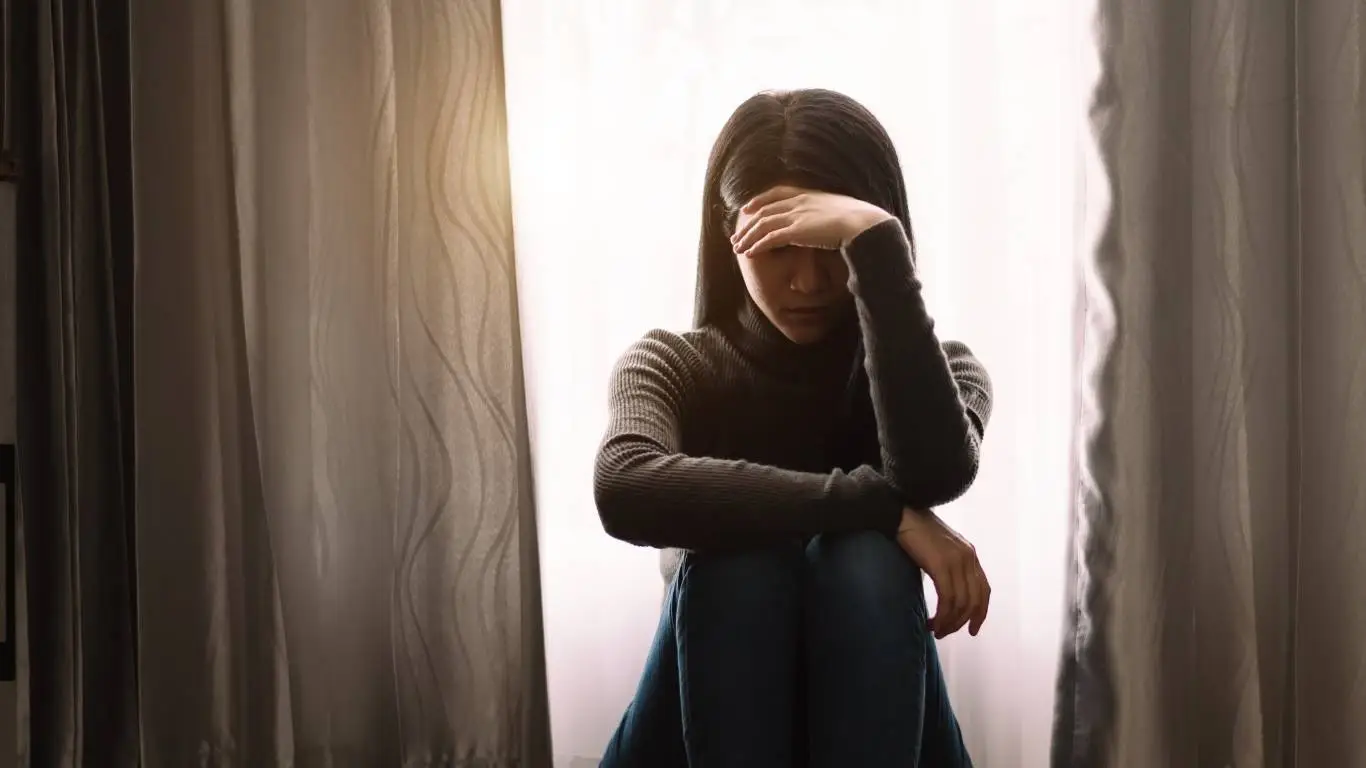How Family History of Anxiety Shapes Your Life More Than You Think
I used to wonder if my constant worrying, racing thoughts, and low-key dread came from something I picked up along the way—or if it had always been there. Growing up, I watched my mom obsessively recheck the stove every night. My older sister would get physically sick before school exams. It wasn’t until I hit my 20s and had my own panic attack in a quiet library that it all started making sense. Turns out, anxiety often runs in families. But what does that really mean—and how much does family history of anxiety actually affect your own mental health?
Understanding the Link Between Family History and Anxiety

It’s not just a hunch. Science backs up what many of us have experienced firsthand: anxiety can be passed down through generations. If someone in your family struggles with anxiety, you’re statistically more likely to experience it too. But that doesn’t mean it’s your destiny.
According to the National Institutes of Health, individuals with a first-degree relative (like a parent or sibling) who has an anxiety disorder are significantly more likely to develop one themselves. This doesn’t just point to genetics—it also includes shared environments, behaviors, and even subtle communication patterns that shape how we respond to stress.
Inherited Traits vs. Learned Behavior
So, is anxiety genetic or environmental? The honest answer is: both. You might inherit a more sensitive nervous system, but you also learn how to interpret the world from the people around you.
- Genetic predisposition: Some of us are simply wired to be more alert to danger or more reactive to stress.
- Modeled behavior: Growing up watching a parent who panics easily or avoids conflict can teach us to view the world as threatening too.
- Family dynamics: High-pressure households, emotional neglect, or overly protective parenting styles can all contribute to anxious tendencies.
I remember how my dad always needed to know where everyone was at all times. His constant checking-in didn’t feel like love—it felt like fear. And now? I catch myself doing the same thing, refreshing location-sharing apps like it’s a nervous habit. Learned behaviors stick, especially when they’re modeled early and often.
How Family History of Anxiety Shapes Childhood

When anxiety is present in a household, it becomes part of the background noise. It’s in the tone of voice, the pacing footsteps, the tense silence before a meltdown. Kids are sponges. Even if no one ever says “I’m anxious,” they still absorb that energy—and internalize it.
Signs You May Have Grown Up With Anxious Caregivers
- Hyper-awareness of others’ moods or energy shifts
- People-pleasing to avoid conflict or criticism
- Fear of making mistakes or disappointing others
- Feeling responsible for others’ emotions
- Chronic need for control or routine
I used to think I was just “sensitive.” Looking back, I was trying to keep the emotional temperature in the room from boiling over. That kind of emotional labor starts early—and it leaves a mark.
Breaking the Generational Pattern of Anxiety

Here’s the good news: just because anxiety runs in your family doesn’t mean you’re stuck with it. Generational patterns can be interrupted. They can be named, understood, and slowly shifted. The first step is awareness—and the second is self-compassion.
When I started recognizing the anxious habits I picked up from my family, I stopped blaming myself. I wasn’t “broken.” I was repeating what I had seen. That shift in mindset made it easier to explore new ways of coping—and eventually, new ways of relating to myself and others.
Steps Toward Healing Generational Anxiety
- Name the pattern: Write out or talk about what anxiety looked like in your family. What behaviors feel familiar?
- Reflect without blame: Your parents or caregivers did the best they could. You can choose differently now.
- Build emotional regulation skills: Breathwork, mindfulness, and therapy aren’t trends—they’re tools.
- Set boundaries: With family, with yourself, with the anxious thoughts that want to take over.
- Seek support: You’re not supposed to untangle this alone. Whether it’s a friend or a therapist, safe connection helps heal old patterns.
If you’re curious about how to take action in real life, this guide on anxiety disorders lifestyle and self-help strategies is packed with practical ways to manage symptoms and gently rewire long-held behaviors.
How Family Conversations Around Anxiety (or Lack Thereof) Shape Us

Some families talk about everything except mental health. In my house, we didn’t have the language for “anxiety.” We had words like “nerves,” “stress,” or “overreacting.” The result? Everyone suffered in silence, thinking their struggle was unusual or shameful.
When mental health is stigmatized or ignored, it makes it harder for the next generation to ask for help. It teaches us to push through, bottle it up, or pretend everything’s fine. But silence doesn’t protect anyone. It isolates. It delays healing.
Ways to Foster Healthy Dialogue in Families
- Start with honesty: “I’ve been feeling more anxious lately. Anyone else feel that way sometimes?”
- Model vulnerability: Share your own struggles without dramatizing them.
- Use neutral language: “That sounds stressful” is more approachable than clinical terms at first.
- Normalize therapy or self-care: Talk about these things like they’re tools—not last resorts.
- Respect privacy: Everyone shares in their own time. Don’t push, just open the door.
Opening up about anxiety in my family felt awkward at first, but it slowly softened the edges between us. What started as small check-ins turned into deeper conversations—and a shared understanding that we were all learning how to cope, together.
For years, I thought managing anxiety meant hiding it better. Smile through the panic, push through the fatigue, keep it together. But carrying the weight of inherited anxiety without ever unpacking it doesn’t make it lighter. It just makes you tired. If anxiety runs in your family, chances are you’ve developed coping mechanisms—some helpful, some not—that now shape your adult life in ways you may not even notice. Recognizing and reshaping those patterns is where real change starts.
Recognizing Coping Mechanisms You Inherited (and Outgrew)

Many of us grew up learning how to manage anxiety by watching our parents or caregivers—whether they meant to teach us or not. That means some of the habits you think are just “you being you” might actually be inherited responses to chronic stress.
Common Inherited Coping Patterns
- Overpreparing: Feeling safest when you’ve planned for every possible outcome—even the unlikely ones.
- Avoidance: Not tackling hard conversations, tasks, or emotions because confrontation feels unsafe.
- Hyper-independence: Refusing help or relying on no one because “needing others” was once discouraged or punished.
- Over-apologizing: Saying sorry constantly for taking up space or making mistakes.
- Self-silencing: Not speaking your needs to keep the peace or avoid conflict.
These patterns often served a purpose. They kept you safe in an unpredictable environment. But if they’re still driving your behavior now, they might be holding you back more than they’re helping. And no, you don’t have to fix them all at once. Just noticing is the first shift.
When Anxiety Becomes the Family Norm

In some families, anxiety doesn’t stand out—it blends in. It’s the standard way of operating. Everyone worries. Everyone overthinks. Everyone prepares for the worst. It becomes the emotional baseline. And when something becomes normal, it becomes invisible.
I used to think constantly planning for disasters was responsible. That my family’s cautious way of life was simply how adults operated. But once I saw how others functioned—calmly, without spiraling—I realized my “normal” was actually anxiety talking.
Subtle Signs of a High-Anxiety Family Culture
- Conversations are dominated by fears, risks, and “what ifs.”
- Vacations, changes, or surprises are met with dread instead of excitement.
- Everyone catastrophizes—small issues quickly become worst-case scenarios.
- High value is placed on control, order, and productivity.
- Emotions are minimized or intellectualized rather than felt and expressed.
These aren’t “bad families”—they’re simply families doing the best they can with limited tools. But it’s important to see how anxiety can quietly set the emotional tone for an entire household—and influence how each person shows up in the world.
Parenting When You Have a Family History of Anxiety

If you’re a parent (or even thinking about becoming one), the fear of “passing on” anxiety can feel intense. But awareness is powerful. The goal isn’t to raise kids who never feel anxious—because anxiety is a human experience. The goal is to raise kids who know how to recognize it, talk about it, and work through it without shame.
What You Can Do Differently
- Model emotional honesty: Show that it’s okay to talk about hard feelings without dramatizing them.
- Teach coping tools early: Simple breathing, grounding techniques, and self-talk help kids build resilience.
- Regulate your own anxiety: Kids mirror your energy more than your words. Prioritize your own care.
- Be curious, not controlling: Ask questions instead of imposing solutions. Anxiety often comes from feeling powerless.
- Normalize therapy and support: Let kids know that asking for help isn’t weakness—it’s wisdom.
There’s no such thing as a perfect parent. But a parent who’s willing to heal while raising emotionally aware kids? That’s powerful. If you’re looking to support that process, this guide to anxiety symptoms can help you catch early signs—in yourself or your children—before they become patterns.
Choosing Your Own Path, Even with a Family History

Maybe anxiety is part of your history, but it doesn’t have to define your future. You’re not doomed to repeat the same emotional scripts you grew up with. You’re allowed to choose different patterns, different tools, and a different tone for your life. Even if no one in your family ever did it before you.
In my own journey, the most freeing realization was this: I could respect where I came from and still rewrite how I respond to the world. I could honor my family’s struggles without inheriting all of them as my own. That balance took time, but it’s worth every step.
Small Reminders That Help Me Reclaim My Calm
- I can feel anxious and still make good decisions.
- I don’t need to explain or justify every boundary I set.
- My story didn’t start with me, but I get to decide how it continues.
- My nervous system deserves care, not shame.
- I’m allowed to rest, even when things feel unfinished.
Managing anxiety when it runs in your family isn’t about “fixing” yourself. It’s about creating space to breathe, to feel, and to choose your response instead of reacting out of habit. You’re not alone in this work—and you’re not behind. You’re exactly where you need to be to start healing.
For more support on the lifestyle side of recovery, check out this breakdown of anxiety self-help practices that actually work in real life. Because rewriting patterns starts with the smallest daily steps—and they all add up.

Camellia Wulansari is a dedicated Medical Assistant at a local clinic and a passionate health writer at Healthusias.com. With years of hands-on experience in patient care and a deep interest in preventive medicine, she bridges the gap between clinical knowledge and accessible health information. Camellia specializes in writing about digestive health, chronic conditions like GERD and hypertension, respiratory issues, and autoimmune diseases, aiming to empower readers with practical, easy-to-understand insights. When she’s not assisting patients or writing, you’ll find her enjoying quiet mornings with coffee and a medical journal in hand—or jamming to her favorite metal band, Lamb of God.






